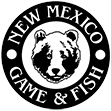Media Contact: Bill Van Pelt, WAFWA Grassland Coordinator
bill.vanpelt@wafwa.org (602) 717-5066
Date: June 4, 2014
Unprecedented Effort Protects Prairie Chicken Habitat in Five States
Nearly 14 million acres now enrolled under various Lesser Prairie Chicken conservation agreements
The May 12 listing of the Lesser Prairie Chicken as a threatened species under the Endangered Species Act helped fuel a surge in oil and gas company enrollments to conserve the species under special agreements spearheaded by the Western Association of Fish and Wildlife Agencies (WAFWA). To date, 160 oil, gas, wind, electric and pipeline companies have enrolled about 9 million acres across the five states that contain habitat for the bird’s survival, committing more than $43 million for habitat conservation over the next three years.
WAFWA’s Lesser Prairie Chicken Range-wide Conservation Plan as well as the Candidate Conservation Agreement with Assurances (CCAA) provided landowners and industry with options to receive regulatory assurance after the listing went into effect. The plan and CCAA were developed by state wildlife agency experts in 2013 with input from a wide variety of stakeholders.
The five range states are Colorado, Kansas, New Mexico, Oklahoma, and Texas. Companies, landowners, farmers and ranchers that did not enroll by the listing deadline of May 12 may still enroll in the plan and receive regulatory assurance under an accompanying Certificate of Participation. The companies are required to pay enrollment fees and these credits allow the companies to continue oil and gas production under certain restrictions while providing funds to mitigate impacts on prairie chicken habitat.
These enrollments complement other voluntary conservation agreements that have been underway for several years in parts of the species’ range. Voluntary ranching CCAA’s have been available in Texas, Oklahoma and New Mexico and many landowners have chosen to participate in this manner. More than 3 million acres of private land has been enrolled across the three states, including about 400,000 acres enrolled by the Oklahoma Department of Wildlife Conservation, nearly 675,000 acres by the Texas Parks and Wildlife Department and nearly 2 million acres by the Center of Excellence in New Mexico. By undertaking voluntary conservation measures such as brush control, grazing management, and prescribed burning on their property, landowners are assured that no further land use restrictions or conditions will be required of them in the wake of the species’ listing. In addition, the Center of Excellence has enrolled another 1.9 million acres of oil and gas lease under separate conservation agreements in New Mexico.
“The enrollment of nearly 14 million acres in these various conservation agreements to benefit the lesser prairie chicken is an extraordinary achievement. Private landowners and industry are critical partners in our collective efforts to conserve this iconic grassland bird,” said Carter Smith, Texas Parks and Wildlife executive director who also serves as president of WAFWA. “Our focus now is to continue implementing the plan, recover the species, and facilitate the bird’s removal from the federal threatened species list. In that regard, we appreciate the U.S. Fish and Wildlife Service’s commitment to and support for using the range-wide plan as a blueprint for recovery.”
Enrollment fees are being deposited with WAFWA and will be administered to fund conservation efforts that will benefit the lesser prairie chicken in the five state region.
“The oil and gas industry has demonstrated overwhelming support for the Lesser Prairie Chicken Range-wide Conservation Plan,” said Ben Shepperd, president of the Permian Basin Petroleum Association. “The industry should be lauded for doing their part in this important initiative and we appreciate the leadership of the Western Association of Fish and Wildlife Agencies in developing a plan that works for industry, landowners and the prairie chicken.”
Organized in 1922, the Western Association of Fish and Wildlife Agencies (WAFWA) represents 23 states and Canadian provinces, spanning from Alaska to Texas and Saskatchewan to Hawaii – an area covering nearly 3.7 million square miles of some of North America’s most wild and scenic country, inhabited by over 1500 premier wildlife species.
For more information about WAFWA: http://www.wafwa.org/
For more information about the conservation efforts of the Center of Excellence: http://cehmm.org/index.php/programs/conservation/
###

